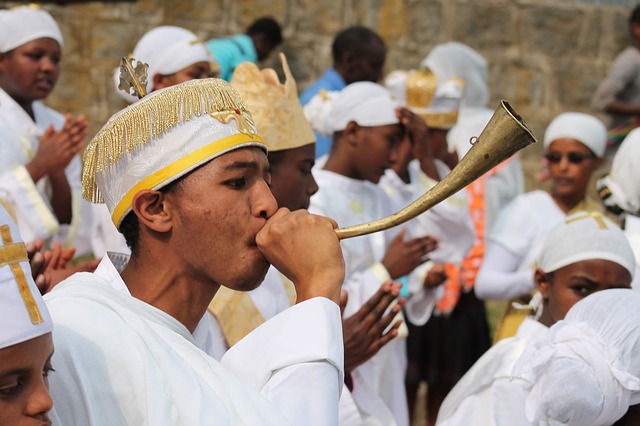Ethiopia and the United States celebrate this month the 100th anniversary of contact between the governments of President Theodore Roosevelt and Emperor Menelik II. This month 100 years ago marked the first meeting by an official American delegation with the leader of Africa’s oldest independent country. An American mission led by Robert Peet Skinner arrived in Addis Ababa on December 18, 1903. President Roosevelt bestowed the title of Commissioner to Abyssinia on Skinner, who normally served as the American Consul General in Marseille. Skinner’s mission launched an important official relationship between Ethiopia and the United States that continues to the present day.
As significant as governmental relations between Ethiopia and the United States have become over the years, the unofficial relationship, which began well before 1903, was actually more important until the onset of World War II. It is instructive to look briefly at the unofficial ties before 1903. The first American, albeit of Welsh origin, to visit Ethiopia was probably Henry W. Stanley of Stanley and Livingstone fame. Stanley accompanied the British expedition to Ethiopia in 1868 led by Sir Robert Napier, who seized the fortress at Magdala from Emperor Theodore.
There was a colorful connection in the 1870s and 1880s between Ethiopia and Americans in the service of the Khedive of Egypt. The Khedive hired 48 former American military officers and civilians to serve in the Egyptian army. Nearly all of them were veterans of the American Civil War, divided about equally between former Union and Confederate personnel. Concerned about the intentions of Emperor Yohannes IV, the Egyptians sent a punitive expedition to Massawa on the Eritrean coast in 1875.

The chief of staff for the 12,000 man force was an American and ten other Americans participated in the expedition, which Yohannes soundly defeated. The Khedive also employed Americans to conduct a mapping expedition and geological study in Ethiopia. The Ethiopians captured an American geologist, L.H. Mitchell, involved in this project. Prior to his release, Mitchell met with Emperor Yohannes making him perhaps the first American to meet an Ethiopian leader. Another American, Colonel Alexander Macomb Mason, served as the Khedive’s Governor of Massawa and acted as his “ambassador” to the emperor of Ethiopia in the mid-1880s.
Although they came long after the Europeans, several American explorers and adventurers began arriving in the mid-1890s. Arthur Donaldson Smith made a geological expedition to Lake Rudolph, now Turkana, passing through Somaliland, southern Ethiopia and exiting through Kenya. William Fitzhugh Whitehouse led a group to Addis Ababa, where he met Emperor Menelik, and continued through southwest Ethiopia to Lake Stephanie and Lake Rudolph. Oscar T. Crosby, an engineer and explorer, traveled from Somaliland to Cairo in 1900, passing through Harar and Addis Ababa, where he met Emperor Menelik. An American hunter, W.N. McMillan, tried without success to navigate the Blue Nile in 1903. One of the most interesting Americans to visit Ethiopia was William H. Ellis, an African-American of humble origin from Texas who became wealthy in the hide and wool business. Ellis met with Menelik in 1903 and became an important part of the Ethiopian-American relationship for the next ten years.





